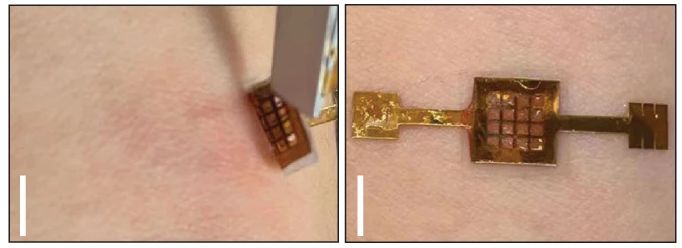A large number of biochemical reactions take place in the human body and these can be used to produce electrical energy. This would be of particular benefit nowadays as the popularity of wearable electronics continues to grow. Researchers at the University of Massachusetts Amherst have produced a biofilm that yields the energy in evaporation and then converts it to electricity. Just imagine being able to power personal electronics or even medical sensors through your own body.
Production of electricity with the help of special bacteria
The researchers succeeded in obtaining electrical energy in such a way that they used a specific strain of bacteria called Geobacter sulfurreducens. These bacteria are known as electricigen – they can conduct and produce electricity. The researchers were looking for a bacterium that would be a good candidate to apply to the biofilm. These bacteria can generate electrical energy under suitable conditions, i.e. under conditions where sweat evaporates. Other bacteria that produce electricity have been investigated in previous studies, but not all types of bacteria can stay alive for long. The team at Amherst found that G. sulfurreducens does not need to be alive to generate electricity.
“It’s much more efficient,” Derek Lovley, study author, said in a statement. “We’ve simplified the process of generating electricity by radically cutting back on the amount of processing needed. We sustainably grow the cells in a biofilm, and then use that agglomeration of cells. This cuts the energy inputs and makes everything simpler.”
How does biofilm work?
Bacteria Geobacter sulfurreducens grow in matted colonies thick as a sheet of paper. Each microbe is connected to its neighbor through what the researchers call “natural nanowires”. With the help of a laser, small circuits were etched into the colonies and these were placed between the electrodes and encased in a polymer patch. These biofilms can be stuck to the skin and when sweat starts to evaporate from the skin, electricity starts to be produced. According to the results, this biofilm can perform better than inorganic generators that are based on the evaporation of salt water. The very structure of the biofilm greatly facilitates the evaporation of sweat.
“The limiting factor of wearable electronics has always been the power supply,” Jun Yao, professor of computer engineering at the University of Massachusetts Amherst, and the paper’s other senior author, said in a media statement. “Batteries run down and have to be changed or charged. They are also bulky, heavy, and uncomfortable.”

Great importance for the future of electronics
The development of biofilm may completely change the future of wearable electronics. It produces a relatively large amount of electrical energy, which is comparable to a battery of the same size. The biofilm does not need to be charged and there is no need to take care of it. The biofield in the biofilm maintained its performance for at least 18 hours. During this time a strain sensor measuring respiration and other body signals is powered.
When the biofilm sheets connected, they were able to power a laser-patterned wearable electrochemical glucose sensor. This technology doesn’t have to be used only on the human body, it could be used on large areas that receive a lot of sunlight and experience a lot of water evaporation. This study was published in the journal Nature.
Image credit: University of Massachusetts Amherst
Source:
nature.com/articles/s41467-022-32105-6#Sec7
zmescience.com/science/news-science/new-biofilm-can-produce-continuous-electricity-from-your-sweat-03082022/





